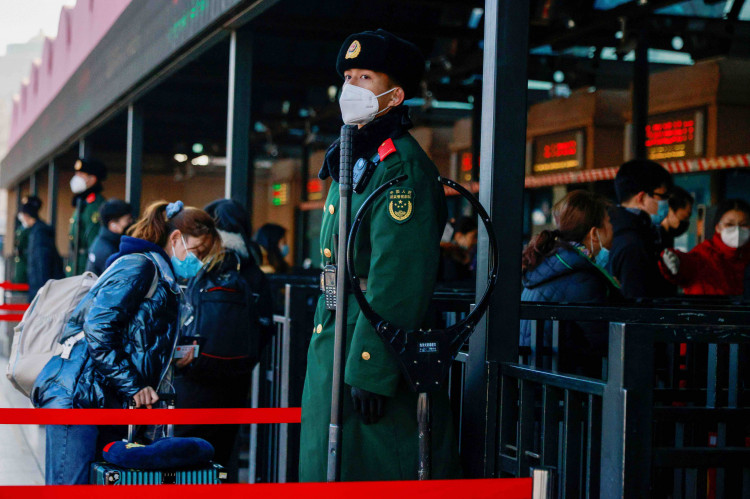Usually the world's largest annual human migration, this Lunar New Year holiday period will be unlike any other as Chinese authorities encourage people to welcome the year of the ox at home.
This year, the Ministry of Transport expects people to make a little over 1 billion trips across the country in the 40 days around the actual Lunar New Year, a period known as 'chunyun', which is a marked decrease over the 3 billion passenger journeys recorded last year.
To discourage travel during a pandemic, workers returning from the countryside to their jobs in urban areas after the holiday must test negative on a coronavirus test within a week of their departure and face a 14-day home quarantine upon arrival.
The country's nucleic acid testing capacity now stands at roughly 16 million per day - more than 11 times higher than this time last year, an inspector with the National Health Commission (NHC) estimated.
Even so, authorities anticipate an unprecedented surge in demand for coronavirus testing to meet travel requirements over the holiday.
"Qualified primary medical institutions are encouraged to build nucleic acid testing laboratories, or be equipped with mobile nucleic acid testing vehicles, to carry out inspection tours in the countryside," Guo Yanhong, inspector of Hospital Administration, said on Feb. 4 at a conference organized by the NHC.
For most of China's 291 million migrant workers, the Lunar New Year is their only opportunity to visit their hometowns all year so urban centers across the country are offering labourers extra incentives to stay put.
Beijing, home to roughly 2.5 million migrant workers, will offer free haircuts and provide hot dumplings to people working over the holiday.
"We will also improve services for empty nesters, the elderly and the disabled by carrying out daily visits and offering meal delivery under conditions that meet the requirements for epidemic prevention," Beijing government official Song Shuxian said.
Deputy Mayor Cao Huling of Suzhou, a tier-one city on the outskirts of Shanghai, estimated that roughly 60% of its rural worker population will stay in the area this year as compared with closer to 15% in past Lunar New Years.






